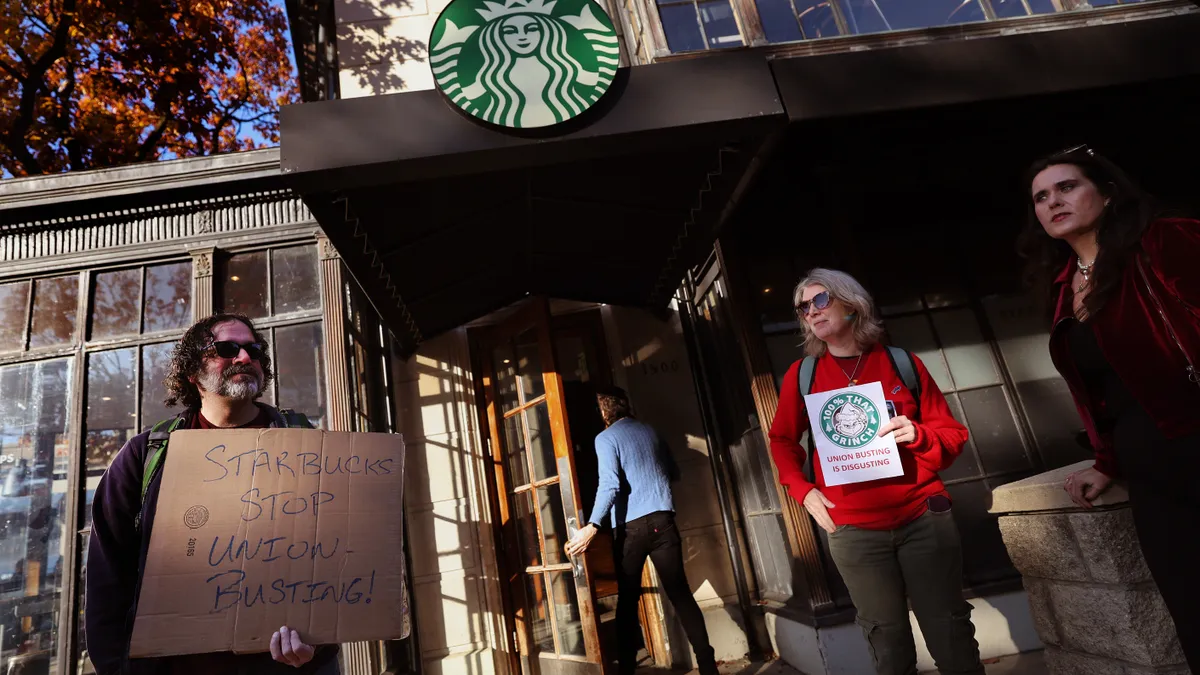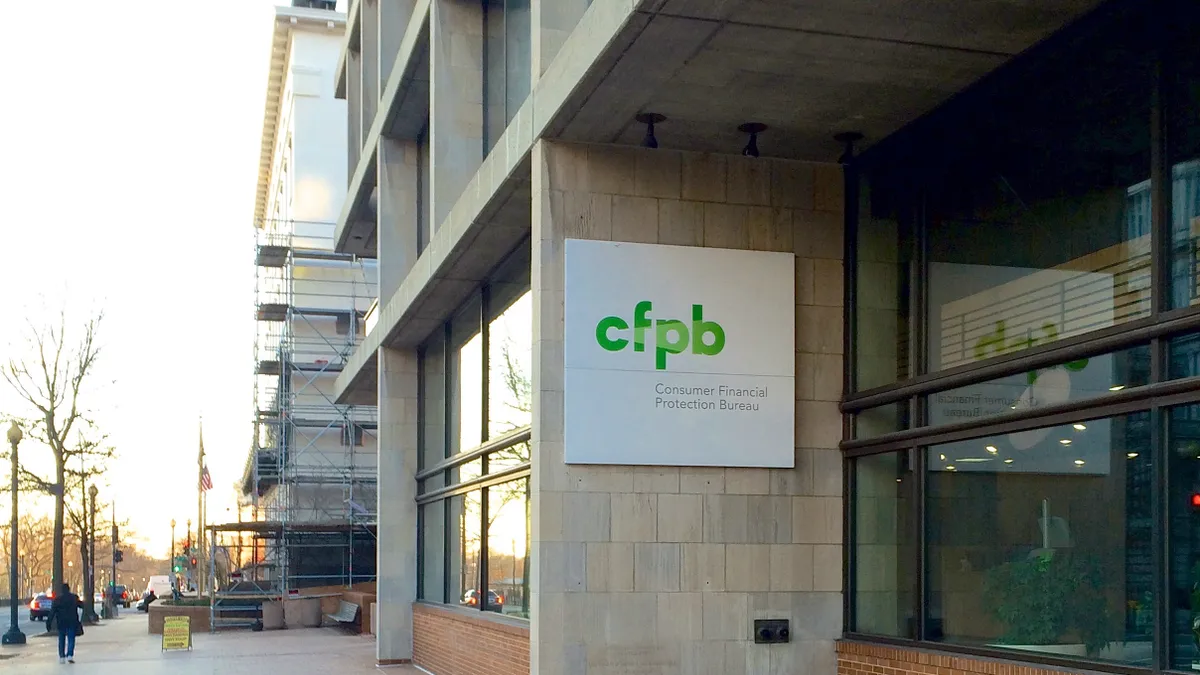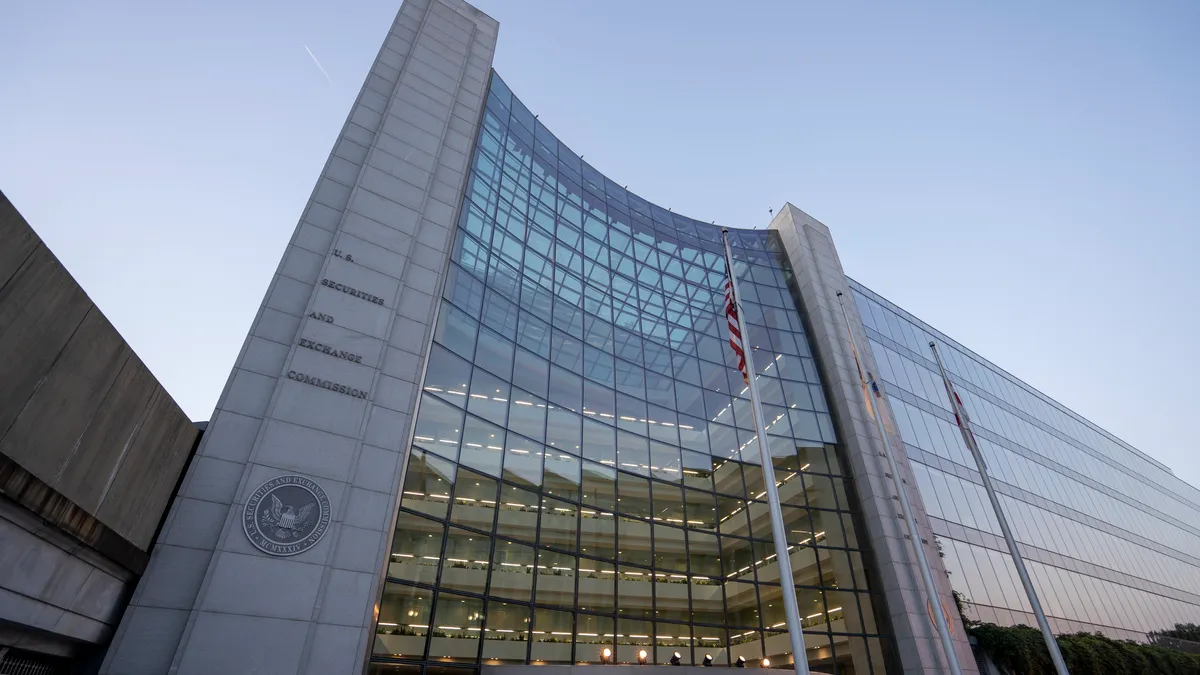Rolling out even ordinary workplace rules can put in-house counsel in a legal minefield if the organization tries to do it while employees are unionizing, labor specialists say.
The National Labor Relations Board earlier this year changed how it evaluates employer workplace rules in a way that’s expected to expose a broader range of rules to enforcement by regulators, even for employers who haven’t faced any union activity.
“When [employers] make a business decision at a critical point in time — like when there's a union campaign — there can become a presumption that the reason is not because there's a business justification for it, but because it somehow relates to the union activity,” Chris Foster, a partner in the labor and employment law practice at McDermott Will & Emery, told Legal Dive.
Timing is critical
Unionization has been booming in recent years and today some 16 million employees in the United States are union members, according to data collected by the Economic Policy institute. In 2022, union ranks increased by almost a quarter million, the institute says.
Union activity is continuing to climb. In October, the NLRB reported that the number of unfair labor practice charges it received in the 2023 fiscal year increased by 10% from the 2022 fiscal year. In the same period, the agency saw a 3% uptick in union representation petitions.
Against this backdrop, organizations that have not had to deal with unionization could find themselves in an unfamiliar environment if their employees start talking about it.
Under the National Labor Relations Act, most private-sector employees are permitted to participate in “concerted activity” with their colleagues – things like discussing wages and working conditions and participating in a union campaign. Employers can’t interfere with this right.
That doesn’t stop employers from enacting workplace policies to facilitate business, but those policies can become vulnerable to charges of unfair labor practices if employees believe they unlawfully restrict or interfere with concerted activity — particularly if an employer introduces the policies after employees begin organizing.
“Most [workplace] policies could be either updated or revised or implemented prior to some kind of union challenge coming in, because the employer has the discretion to do that,” said Marjorie Soto Garcia, a partner at McDermott Will & Emery. “Once employees start organizing, however, a new rule will likely come under scrutiny.”
An employer would be able to justify introducing employee performance standards as purely a business decision prior to unionization efforts, Foster said, but if the policy was rolled out after employees start talking about unionization, that could be understood by employees and labor regulators as an attempt to punish employees for exercising their labor rights.
The same principle can apply even to improvements in wages and working conditions. If an employer decides to raise wages after an organizing campaign has started, “that could also be seen as attempting to interfere or chill involvement with the union” if employees interpret the raise as an incentive to stop organizing, Soto Garcia said.
The Stericycle standard
While poor timing can put a workplace policy at risk of violating the NLRA, recent legal changes have also exposed a wider range of workplace rules to ULP charges — regardless of whether an employer introduced the rules in response to employees’ concerted activity.
Since 2017, when the National Labor Relations Board decided a case involving the Boeing Company, employers have had the assurance that labor regulators would evaluate the lawfulness of workplace rules by striking a balance between protecting workers’ organizing rights and employers’ “legitimate justifications associated with the rule,” according to language in the decision.
The Boeing decision also outlined three categories of workplace policies: those that are always lawful regardless of when they are enacted (such as policies banning cameras or requiring “harmonious interactions” in the workplace), those that are always unlawful (such as policies banning workers from discussing wages) and those that should be evaluated on a case-by-case basis.
The certainty employers enjoyed under Boeing went away in August, when the NLRB issued its decision in a case called Stericycle, which restored and expanded the less employer-friendly, pre-Boeing standard.
Arguing that the 2017 standard allowed employers to enforce overbroad workplace rules, the board majority in Stericycle said it would no longer consider certain workplace policies, like no-camera rules, as automatically lawful. Instead, the board would evaluate the lawfulness of all contested policies on a case-by-case basis by first asking whether an employee could reasonably interpret a rule as restricting their right to organize.
If an employee could say yes to the question, the board would give the employer a chance to prove that the policy advances a legitimate business interest and that a narrower rule wouldn't work for achieving that goal.
The result has been confusion, critics say. Workplace policies that previously seemed to fall squarely within the bounds of labor law, unless they were introduced in response to employee organizing — like rules banning outside visitors — can now be subject to credible ULP charges at any time.
“The board has inserted instability and confusion into the workplace and created risks for employers attempting to implement common sense policies that protect workers, customers and the community,” Kristen Swearingen, vice president of legislative and political affairs for the Associated Builders and Contractors, said in a statement.
If rules “are overly broad, or if they're not aimed at a legitimate, substantial interest, then they're not going to survive” under the Stericycle standard, said Alek Felstiner, who represents workers and unions as a partner at Levy Ratner.
A broad no-visitors rule could fail to prove lawful at a restaurant open to the general public, for example, even if the restaurant’s employees have shown no interest in unionizing, Felstiner said.
Under the 2017 Boeing standard, many “employers felt comfortable putting in place preventative rules to try to curb organizing activity, because there were categories of rules that were per se lawful, and employers could just adopt them without being worried that they would be challenged,” Felstiner said.
Now, he added, “those rules will get reviewed under the current Stericycle test and potentially overturned even if there was no organizing activity.”
Best practices
Employers looking to introduce workplace rules in this new legal climate need to assess the rules’ potential impact from every angle, said Foster — especially if their employees have started organizing.
“The more union activity there is, the more robust [employers] need to be in thinking about every aspect of a policy, from the verbiage to the exceptions to the timing to the rollout to what other policies are rolled out at the same time,” Foster said.
A good rule of thumb, said Soto Garcia, is “making sure that [rules are] narrowly tailored, and that they are tied to a specific purpose, and that their purpose is clear to the reader.”
“I don't think we'll ever be able to completely eliminate all risk, 100%,” she added. “But we can at least reduce and help mitigate some of that potential risk.”
[Editor’s note. Due to an editing change, an earlier version of this story included a reference to state laws that support unionization but those laws apply to public employees. The focus of the piece is on private sector employees.]


















